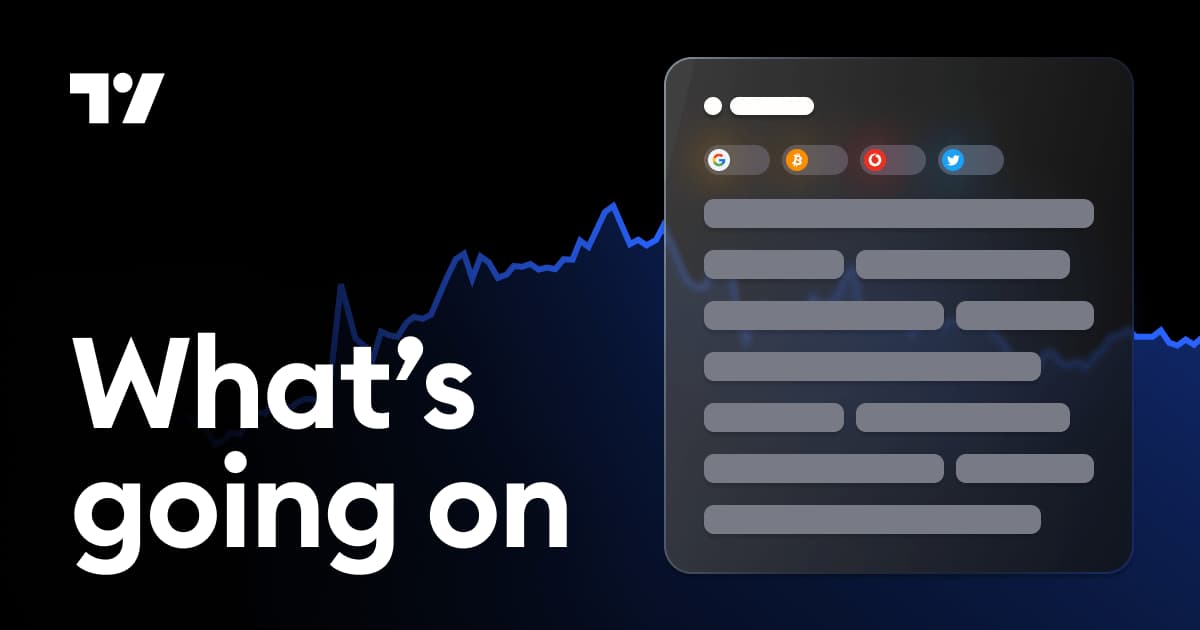
For more than a year, no one could figure out Lauren Keefe’s strange constellation of symptoms.
The 40-year-old was plagued by chronic fatigue, anxiety, night sweats, and insomnia. Her joints ached. Her hair transformed into a wiry texture. Her skin became perpetually dry. Her ears started itching, then ringing.
She dismissed some of these symptoms as merely growing older and not exercising enough. It was when the heart palpitations began that Keefe decided to see a doctor.
“I just felt deranged. I felt like I didn’t even know who I was,” Keefe, now 46, says. “I just felt like something is going on with me. I have to have some kind of explanation for it.”
One doctor sent her to a cardiologist. Another made her do a sleep study to see if she had sleep apnea. And a gynecologist suggested low vitamin D might be the problem.
It would take at least half a dozen failed attempts until Keefe finally had an answer, when a doctor she found through the Menopause Society concluded that she was in perimenopause.
“I was sent to all types of different specialists, but never once did anybody concede to the fact that it might be hormonal,” Keefe says.
(Doctors are finally starting to take women’s pain more seriously.)
Keefe’s symptoms are not the hallmarks of a disease, but a phase of life every person with a uterus can reach. Technically known as perimenopause, it is the often chaotic and lengthy run up to menopause, which formally begins a year after a woman’s last menstrual cycle.
But while we know when perimenopause ends, no one is entirely sure when it begins—which is partly why it’s so hard to diagnose. “That’s really an area where there’s gaps in data,” says Nanette Santoro, a professor of obstetrics and gynecology who studies perimenopause. Some studies still put the average age of onset at 47.5 years, but there are signs some women may experience it as early as their 30s.
It’s one of many unanswered questions about perimenopause—including what it really is and how it differs from menopause despite sharing signature traits. Perimenopause also has at least a hundred different associated symptoms, ranging from the debilitating—major depression—to the bizarre—itchy ear canals. Some women barely experience anything, while up to a third may endure years of escalating problems.
To make matters more complicated, it is difficult to fully separate some symptoms of perimenopause from just getting older.
But there’s reason to hope that women may soon have some answers.
Talking about perimenopause, once taboo, is fast becoming its own industry. The term, sometimes shortened to “peri,” is a ubiquitous buzzword on podcasts, TV, and in books. Influencers like Melani Sanders—the founder of the We Do Not Care Club on TikTok and Instagram—have gone viral. Even actress Halle Berry opened up publicly about being misdiagnosed with herpes instead of perimenopause—then launched a supplements company aimed at perimenopausal women.
(What you need to know about perimenopause supplements.)
All the talk about perimenopause is starting to resonate with scientists too. Research into women’s health has historically been neglected, especially for women who have stopped having children. But women in midlife today are often at the peak of their careers, and they expect their healthcare—and the science behind it—to keep up.
When does perimenopause begin—and why?
Perimenopause emerged as a medical term in the 1960s but was rarely used since it wasn’t seen as significantly distinct from menopause—many clinicians even now still refer to it as menopause or the menopausal transition.
Earnest research into this phase of life didn’t begin until decades later, when at least one 1982 study in women over 40 defined the average age of onset at 47.5 years.
The Seattle Midlife Women’s Health Study subsequently revealed that there are stages of perimenopause. The study, which ran from 1990 to 2013, found that it could be broken into discrete three-or-so-year chunks based on a woman’s menstrual cycles. A person could be said to be in early perimenopause when their periods started to be off by about a week or so, while late perimenopause was characterized by 60 days without a cycle.
But these criteria still don’t capture the full spectrum of what women experience, says Nancy Woods, one of the researchers who led the study and established the Center for Women’s Health Research at the University of Washington School of Nursing. “You saw [perimenopause symptoms] in women who would not have met the criteria for this early stage, because their cycles weren’t that variable,” Woods says.
If changes in the menstrual cycle don’t neatly match up with the onset of other perimenopause symptoms, then is there another biological process that might be more telling? That’s what scientists are still trying to figure out.
Woods suspects it may be related to fluctuating levels of sex hormones, primarily estrogen and progesterone. The effects can be felt far beyond the reproductive system—including in the brain.
(Scientists are finally studying women’s bodies. This is what we’re learning.)
Women’s brains are connected to their ovaries via the nervous system and the endocrine system. What happens in one organ can affect the function of the other, explains Lisa Mosconi, a neuroscientist who is the CARE (Cutting Alzheimer’s Risk through Endocrinology) program director at the U.S. nonprofit Wellcome Leap.
For women, “estrogen is to your brain… as what fuel is to a car,” says Mosconi, who is also the director of the Women’s Brain Initiative at Weill Cornell. Her research suggests estrogen’s activity in the brain may be very closely correlated to both cognitive and vasomotor symptoms of perimenopause, like brain fog and hot flashes.
The reason, she suspects, is that the brain goes through a “renovation process” in the run up to menopause: Connections that once were dedicated to reproduction are no longer necessary, while hormone levels begin to fluctuate and, ultimately, decline. Mosconi’s work also shows that the brain stops burning sugar for energy and starts burning fat instead.
She has also found evidence that women experiencing perimenopause symptoms show a decline in their white and gray brain matter volume, similar to that of a pregnant woman—but unlike in pregnancy, these changes don’t necessarily resolve after nine months, because perimenopause can last for years.
(How pregnancy transforms the brain.)
We don’t yet know how these brain changes map to the physical and psychological symptoms of perimenopause, Mosconi says, but it is clear that this shift occurs when a woman is most likely to experience perimenopausal issues.
Why don’t more doctors recognize perimenopause?
Anxiety, sleep problems, depression, and hot flashes are the most widely reported symptoms of perimenopause.
But the range of symptoms is vast. When Christian Ohonba was in her mid-30s, she started experiencing menstrual bleeding and pain so extreme that “it was like I was hemorrhaging,” says the 39-year-old, who is based in Texas. Worse, it felt like all her coping mechanisms had stopped working. “I started really just mentally spiraling,” she says.
This is an experience many experts refer to as a kind of reverse puberty, with acne, mood swings, weight gain, sore breasts, extreme premenstrual cramping, and heavier bleeding.
Other people in perimenopause become clumsy, and some experience a change in their sense of smell and taste, says Louise Newson, a menopause specialist who served on the U.K. government’s menopause taskforce. Some, like Keefe, have heart problems, while others might feel extremely, irrepressibly angry.
(These are the biggest health challenges women will face in their lifetimes.)
This array of symptoms, which often mimic other diseases like autoimmune conditions and even dementia, can come and go, might worsen or improve with time, and can range from mild to severe—and no one is entirely sure why.
Some clinicians may be unwilling or unable to connect the dots between a patient’s symptoms and their hormone levels, says Newson.
Indeed, Keefe’s experience of being bounced from one healthcare provider to another is the norm: A U.K.-based study of 100,000 women found that 4 out of 5 women reported times when their doctor did not listen to them. And another study of more than 5,000 women found that it took at least three years for a third of respondents to be correctly diagnosed with menopause-related symptoms.
It’s even more difficult for women of color: A 2022 study found that Black women are more likely to have severe perimenopause symptoms than white women, but they are also 50 percent less likely to be prescribed hormone replacement therapy, and less likely to report treatment for hot flashes and other perimenopause problems than white women.
“There’s been a real misunderstanding about hormones and what they do, and what menopause is, and menopause training is nonexistent for many doctors,” says Newson.
And that goes for gynecologists too, says Stephanie Faubion, medical director of the Menopause Society and director of the Mayo Clinic’s Center for Women’s Health.
Her team conducted a survey published in 2019 of U.S. internal medicine, family medicine, and ob-gyn residencies. “None of them got more than an hour or two at most of menopause education,” Faubion says. In turn, women must be their own advocates.
The frontier of treating perimenopause
When Ohonba finally reached out to a clinician in February 2025, she had already spent months online learning about perimenopause—knowledge that empowered her to immediately ask her provider about treatment.
There are just a few approved treatments for perimenopause available—and, despite what you might have seen on social media, none of them are supplements.
(5 things you should know before trusting that supplement.)
Hormone replacement therapy is recommended by the North American Menopause Society as a frontline treatment for perimenopause. It works by replacing the hormones—usually in the form of estrogen, and sometimes also progesterone and testosterone—that the body is no longer producing on its own. Studies show that treatment with systemic estrogen with progesterone can lead to a 75 percent decline in symptoms like hot flashes.
Yet just four percent of women are prescribed hormones, according to some estimates—a gap that most experts attribute to the lingering effects of a widely cited but often misinterpreted 2002 study that linked hormone therapy with increased risk of some cancers and other diseases.
“We’re really limited by this study that took place two decades ago and all the work that has been done since has not received nearly as much attention,” Mosconi says. Newer research has since shown that HRT is safe for women in the earlier stages of menopause and perimenopause unless they have some other risk factor.
“One of the things that I think a lot about are the risks to women of not having hormones,” Newson says. Left untreated, perimenopause is linked to increased odds of depression and anxiety, while women who don’t take hormones experience elevated risk of osteoporosis.
Beyond hormones, few other treatments are backed by solid evidence. One of the most interesting is fezolinetant, which was approved for use to treat hot flashes in the U.S. in 2023. It works by acting on a brain receptor that plays a role in regulating body temperature, and it contains no hormones.
Another drug, called elinzanetant, has shown similar efficacy for hot flashes in clinical trials, and seems to improve other symptoms like sleeplessness too. It was approved in the U.K. and Canada in July 2025, and is currently under FDA review.
Scientists are also exploring ways to delay menopause by slowing down ovarian aging. But while this frontier of medicine is intriguing, it is still extremely preliminary—meaning, right now, hormone replacement therapy remains the best treatment available to patients.
(Could this be the end of menopause as we know it?)
It has made a difference to Ohonba. “When I got the prescription, I literally put it on as soon as I got home, because I was in such bad shape,” she says. Since then, she has started sleeping more regularly, and her mood has brightened. “I can actually get up and work out,” she says—a simple thing that seemed impossible before starting hormones.
The biggest unanswered questions about perimenopause
Not everyone in perimenopause benefits from hormone therapy. Keefe was eventually prescribed the treatment but she had to stop it when she experienced sudden spikes in her blood pressure that, on one occasion, was severe enough to land her in the emergency room.
Stories like hers point back to the complexity of perimenopause—and how far we remain from truly understanding it.
Studying women in this time of life has long been neglected. That’s partly because female sex hormones simply make female bodies more complicated to study—and because perimenopause can last far longer than most research grants.
There’s also been a lack of motivation. There is “a cultural thought that women need to just muscle through the physical changes that they go through,” says Jennifer Payne, a professor of psychiatry at the University of Virginia. But the tide appears to be turning.
Payne and other experts agree that perimenopause appears to be “having a moment,” driven by Millennial and Gen X women who have gotten used to accessing medical information online, and aren’t afraid to talk about themselves. But there is still a mountain of work left to be done, she and other experts caution.
“There’s lots of questions that remain about effective therapies,” Faubion says. Synthetic hormones may not be as effective as natural ones, for example. And some women who are regularly menstruating might not benefit from hormones, either, because they are still producing them—even if erratically, Santoro adds.
Among the major unanswered questions around hormone therapy is how it interacts with the brain, Mosconi says—and particularly whether it could ameliorate some of the cognitive effects of the menopausal transition. “We will never have a clear answer unless we’re able to treat women with estrogen and make sure to monitor the effect of estrogen therapy in the brain,” she says, adding that it is something she wants to study.
“There’s a lot of female scientists who are now really, really pushing to be able to do that kind of work,” Mosconi says. “It’s a problem that women experience, and I think women are very motivated to break the stigma, if nothing else.”



